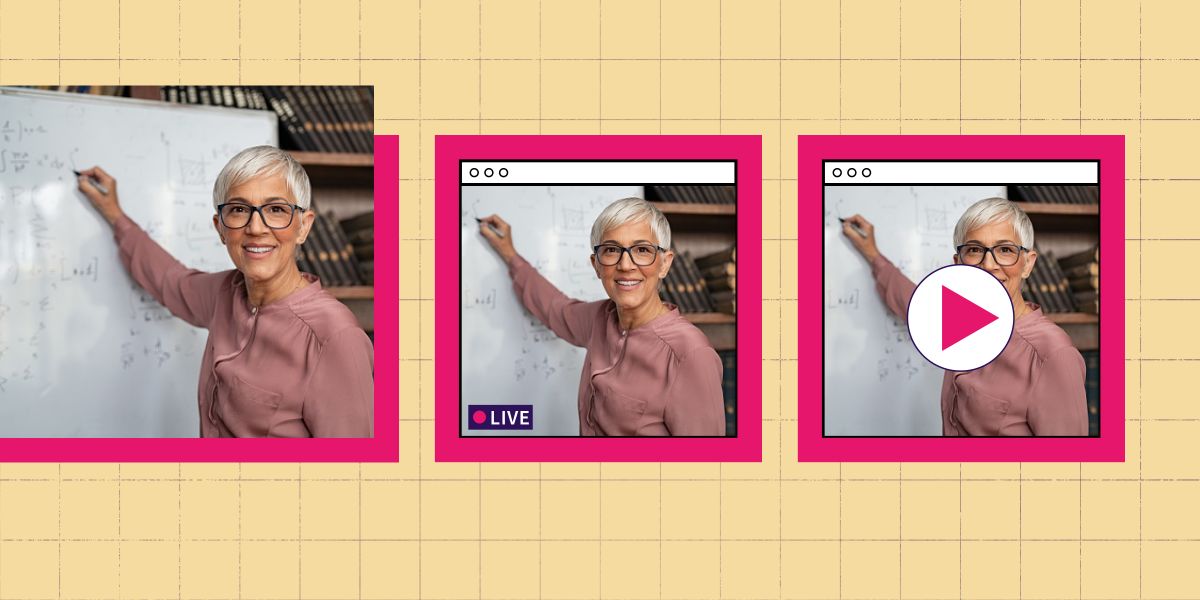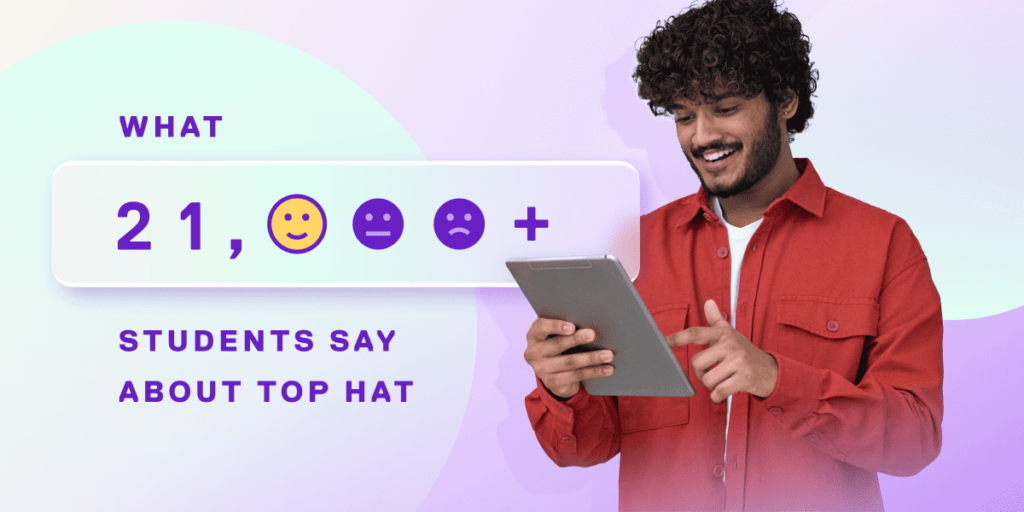In the aftermath of the COVID-19 pandemic and subsequent campus closures, college and university leadership and administration teams are immersed in high-stakes discussions about how to proceed. A number of educational models that blend on-campus and online learning experiences play a significant role in this conversation. Hyflex courses are an option for offering increased flexibility for students while maintaining academic rigor.
For some higher education institutions, those decisions are the difference between survival and closure. Many have raised questions about whether to resume face-to-face learning experiences or stick to strictly online learning this fall in a way that is both physically safe and educationally sound for students and faculty members. A number of institutions still face significant increasing pressure to re-open from students and their families. This raises questions about the college student experience, both inside and outside of the classroom. Institutions now must question whether hybrid methods of learning are any better than moving forward with purely online learning, or returning to in-person classes.
What are hyflex courses?
The hybrid-flexible (hyflex) method is a blended model that institutions are examining if they plan to be partially or fully open to students in the fall. Hyflex course design is where each course is designed to give students a choice to attend either in person or engage in online learning.
The hyflex model aims to ensure that students are able to switch back and forth between in-person and online participation in the class, between weeks or even class sessions. Instructors are required to build a fully online course and a face-to-face version, both with the same learning outcomes.
Many instructors have created blended or hybrid courses in the past that either incorporate digital elements into face-to-face classes or to allow student learning to continue from a distance. Typically they decide which elements of the course content are best delivered in real-time learning environments and which are most effectively delivered through an online course platform, and divide up learning activities accordingly.
However, by contrast, in hyflex courses, professors “don’t have that luxury,” Brian Beatty, professor at SF State University, says. “You want to be able to create a fully online version and a fully face-to-face version and find ways to bring them together into a single course experience that has multiple participation paths … And the student gets to control whether they’re doing it online or in the classroom.”
The goal of hyflex course designs is to give students access to equivalent learning experiences, whether in-person, synchronously online, or asynchronously online. There are benefits to each mode of delivery: in-person and synchronous online learning provides a sense of immediacy, access to instructor body language and non-verbal cues, as well as conversational interaction. Asynchronous online learning allows students to pace themselves and permits individual reflection. This method of learning is also more flexible for those who may work part-time, have childcare responsibilities or have less predictable daily schedules.
How hyflex courses impact students
How they help
The inherent flexibility of hyflex courses make it easier for students to balance their personal and professional lives with their academics, but it also has significant educational benefits. It gives students options to customize their educational experience. With students arriving to class with different levels of prior knowledge and experience with course content, this format allows them to choose what kind of learning experience works best for them. Similarly, some students learn better online and some prefer face-to-face class meetings. Some educational experts think that flexible blended learning models give students more control over the experience of learning. This helps them engage further in course material and take the initiative in learning.
A study by Dr. Jackie Miller at The Ohio State University suggests that the opportunities that hyflex courses and other hybrid classes present provide significant opportunities for improving educational outcomes.
- 95 percent of students preferred having options for how to interact with instructional technologies and learning management systems (LMS) to support their learning.
- 95 percent of the students in Miller’s course also felt that the course model increased their conceptual understanding of learning objects.
- 70 percent felt that flexible participation options made them more likely to engage with course material through discussion forums and web-conferencing.
Institutionally, the Hyflex model also offers benefits. It can help schools to better coordinate classes and meet the needs of students who are spread out over a large geographic area and have to commute to class. It can also be a flexible solution for schools that are challenged by limited classroom space and budget constraints.
How they hinder
One of the biggest challenges to the hyflex model is shared by all non-traditional approaches to higher education: the culture of the school has to support these kinds of initiatives.
This means that, for such a model to be effective at achieving educational goals, instructors have to be comfortable working with technology, course management systems need to already be in place for use (or created at some expense), and the students themselves need to have a certain degree of technical competency and understanding of what hybrid education requires of them. If any of these elements are lacking, hyflex course models have serious weaknesses that make either solely online or in-person classes more viable.
How hyflex courses impact instructors
How they help
For educators, hyflex courses could help them return to their usual method of teaching with in-person class lectures delivered to a small group of students. This allows for real-time student reactions and interactions on which professors appreciate, and often lack in online learning environments.
Another benefit for instructors is that hyflex courses allow them to teach remotely part- or full-time. They would also be able to shift between face-to-face and remote teaching as public health and safety restrictions change. For faculty concerned about their health and safety, teaching at a distance would give them the flexibility to teach from home to a classroom of in-classroom students and a group of online students simultaneously, while still giving students the opportunity to work collaboratively and engage with one another.
How they hinder
Hyflex courses place a great deal of pressure on instructors to cater to up to three different learning environments at once. As the past semester has proven, in-person live lecture instructional methods often don’t translate well in online learning environments, and vice versa. Navigating the challenges of teaching to online and in-person students simultaneously, while also creating engaging learning experiences for students participating in the course asynchronously, can be difficult to manage. If done poorly, students learning online may find themselves watching, rather than actively engaging, with course content. Without the careful organization of the course content and thoughtful instructional design, online students are likely to be at a distinct disadvantage in faculty attention and learning opportunities.
Looking forward to Fall
Hyflex learning may be a potential solution. It allows colleges to better meet the needs of non-traditional students through greater flexibility, customization, and potentially cost-effectiveness. Hybrid models of learning can offer institutions a smarter, more accessible way to balance the demands they face from students, instructors, and administrators while helping to improve critical indicators like satisfaction, achievement, and resource optimization.
Yet despite the promise of new educational models in the wake of the COVID-19 pandemic and subsequent pivot to online learning, there are still many challenges ahead. Institutions must improve their IT support and build strong network infrastructures while instructors have to coordinate with students and other faculty and be willing to implement and use new technology. Most importantly, students themselves have to take greater responsibility for their own learning process and educational outcomes.
For schools that can bring all of these things together, hyflex courses offer the chance for colleges and universities to provide students with the most customized educational experience yet. A model that best meets students’ needs, goals, and personal aspirations, while students are questioning whether to continue at their institution could be a major selling point.
Click here to learn more about Top Hat’s suite of interactive tools to create engaging active learning environments in blended, online and face-to-face classrooms.


